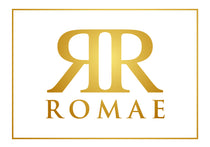Lumine Ring 22K
This thin ring is as delicate as it is stunning. It is based on a solid gold example found in the excavations of the ancient Roman town of Herculaneum in the Bay of Naples, dating to before AD 79. It has a small area on the face that may be inscribed with one initial in Roman font type, or a very small design.
The Romans, like other ancient cultures, used rings with special and personalized designs on them, "signet" rings, as a form of self-identification. Often incised into the stone or metal, the designs on the front of the rings were often letters that spelled out a name or an idea, or symbols such as images of gods or personifications that meant something to the individual - or that recalled the person's own name in a clever way. As these designs (and therefore the rings) were personalized, they became a type of signature or an official mark of the individual, when pressed into hot wax on a document.
"The hand should not be overloaded with rings, which should under no circumstances encroach upon the middle joint of the finger." - Quintilian (first century AD), Institutio Oratoria 11.3.142
"Lumine" means "light."





